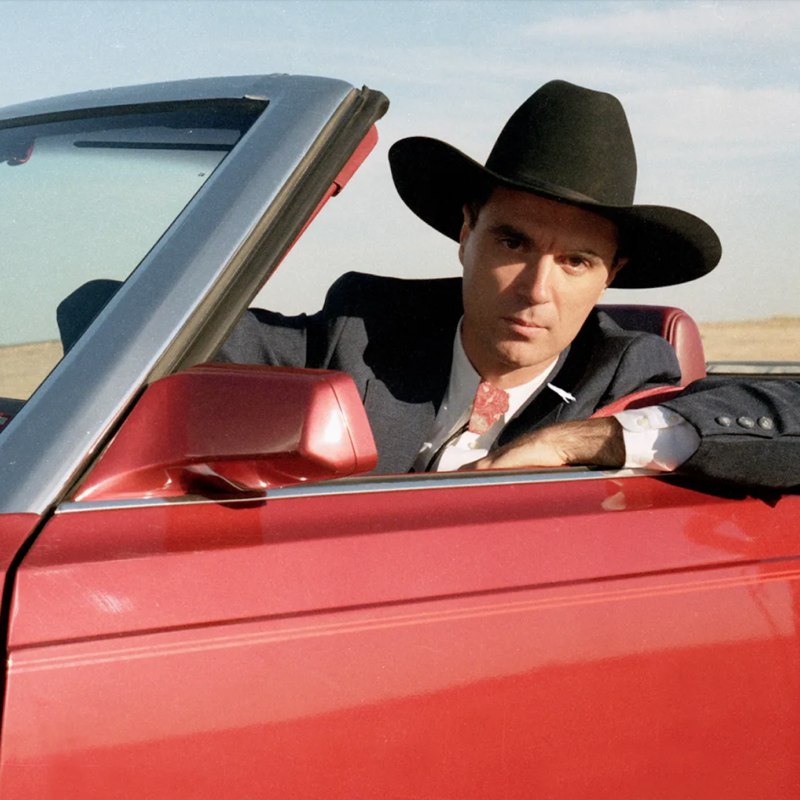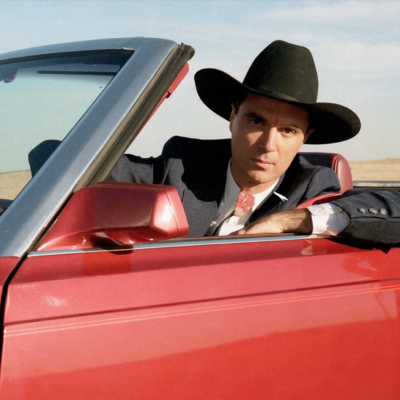Have you ever watched a windshield crack? Often, the break stems from one small, central hole—made by a bottle, a rock, a bullet. Then it begins to spread, to send lines across the unblemished surface, with little forgiveness and less reason. When Noah Pierce returned from Iraq after two tours that totaled roughly two-and-a-half years, he returned with a similar hole, one that spiderwebbed outwards until Pierce committed suicide more than a year after his honorable discharge.
|
Shots fired: Ashley Gilbertson photographs the lives around a dead soldier named Noah Pierce in the latest Virginia Quarterly Review. |
Ashley Gilbertson followed the cracks in Pierce, carefully reassembling the young man in an essay published in the latest issue of the Virginia Quarterly Review titled “The Life & Lonely Death of Noah Pierce.” A photographer since he was a teenager when he picked up the hobby to document his skateboarding, Gilbertson first traveled to Iraq in 2002—not too long before Pierce first deployed, in March 2003.
Like Pierce, Gilbertson made multiple tours of Iraq, many of which are documented in his grounded, excellent book, Whiskey Tango Foxtrot; he counts the tours aloud when I speak with him on the phone, ticking off numbers like a recovering addict might count his days on a wagon, nine separate trips. And, like Pierce, Gilbertson returned with a crack, though he worked to keep his from spreading.
“I’ve got friends in the military that were killed—in particular, one guy that I felt responsible for, Lance Corporal William Miller,” says Gilbertson from his New York home. In 2004, Gilbertson joined Miller in a raid on a minaret in Fallujah. “He went first up the minaret, stopped me from going up first, and said, ‘We have to clear it, make sure there’s no insurgents,’ got shot point blank and died,” says Gilbertson. “When that happened…I felt that I understood what war is.”
When Gilbertson returned from his time in Fallujah, he began a photography project that focused on the bedrooms of dead enlistees, “bedrooms left by soldiers that had committed suicide as a result of Post-Traumatic Stress Disorder [PTSD] or Traumatic Brain Injuries [TBI],” says Gilbertson. (Asked whether his own experiences left him with similar struggles, Gilbertson simply responds, “You’d have to ask my shrink.”) During his research on soldiers’ bedrooms, Gilbertson met Pierce’s family. Soon after that he postponed his work on the bedroom project to work exclusively with them to reassemble Pierce’s battle with PTSD and TBI.
Though Gilbertson never photographed the soldier, the photos in “The Life & Lonely Death of Noah Pierce” link uncannily to anxiety; they spread out from central totems like cracked ice. Pierce’s own final self-portrait, taken with his cell phone shortly before his death, is recreated; Gilbertson places the camera in the hands of Pierce’s mother, in a pose that suggests both Christian communion and a motion for someone else to, please, take up the weight.
“I mean, you come back here and America’s not a country at war,” says Gilbertson. “We have to do as much as we possibly can—as reporters or photographers, or wherever that line blurs—to bring this home to people, to put this in people’s bedrooms, kitchens and dining rooms, and make them realize that not only are we at war as a nation, but we’re also at war back home.”
Gilbertson, who exhibited many photos at The Bridge/Progressive Arts Initiative as part of the inaugural Festival of the Photograph, will speak on Friday, October 10, at The Jefferson Society’s room on the West Range, Hotel C, on the UVA Grounds. The event begins at 8:30pm and is open to the public.
A second look at Second Street
Curtain Calls reported previously on Leah Stoddard’s departure from Second Street Gallery after more than eight years as the nonprofit gallery’s executive director. Thing is, ol’ Curt was a little slow on the follow-up, particularly regarding the naming of Second Street’s new director, Rebecca Schoenthal, a former adjunct professor of art history at UVA and current member of Charlottesville’s Board of Architectural Review. But Curt wasn’t the only one.
In a September 24 post on his blog, ArtPark (artpark.typepad.com; highly recommended reading), Rob Jones, a co-owner of Migration: A Gallery with his wife, Laura, raised a few questions regarding the announcement of Schoenthal’s appointment, first made during a $35-per-ticket “Season Preview” event on September 4. A press release promoting the September 4 season preview makes no mention of an announcement concerning Schoenthal.
“SSG is a nonprofit institution that relies on public funding to help keep its doors open,” wrote Jones in his blog, before concluding: “I would expect a little more transparency from a publicly funded institution.”
“I’m speaking on two levels,” said Jones in a follow-up interview. “As a member of the arts community and secondly as a paying member of Second Street Gallery. As a member of the gallery, I’ve been a little frustrated not knowing what the heck has been going on.” Three hours after Jones posted this entry, he received an e-mail addressed to the SSG “Members” e-mail list from Steve Delgado, president of the gallery’s Board of Directors as well as president of C-VILLE Weekly’s parent company.
“As yesterday was her first day on the job,” wrote Delgado in the e-mail, “I am happy to introduce to you our new Director, Rebecca Schoenthal.”
“There was no better time to ‘unveil’ an important part of our upcoming season,” clarified Delgado, who responded to this columnist’s questions via e-mail. “We made the same announcement the following evening at our First Friday’s opening for people who could not make the event and then followed that with a letter to our members after her official start date.”
“The timing was humorous, at least,” Jones remarked later, who also said that he welcomes Schoenthal and looks forward to meeting her. He added, “I think there was a comment from Mr. Delgado that [Leah Stoddard] resigned. I know that’s not true.” Asked about what set Schoenthal apart as a candidate, Delgado wrote that the new director, “has an inherent desire to understand and improve upon the ways that local communities embrace art.” When asked about a May 7 press release that announced Stoddard’s resignation, Delgado maintained “That press release is accurate.”
“As I’ve mentioned publicly, Leah Stoddard was an instrumental and unforgettable part of Second Street’s 35-year history,” he continued. “Now, Second Street is looking forward to Rebecca’s leadership in starting its next 35.”
It was a tiered delivery of information, to be sure; sometimes, the news simply doesn’t reach you by the expected route. Second Street’s current show is a texturally invigorating exhibit by Gina Ruggeri and Jeff Eisenberg, and may be a great way to meet the city’s latest gallery director, you know, directly. What’s more, Migration unveiled Jan Aronson’s latest collection of oil paintings last Friday in an exhibit called “While Rome Burns,” and word is that the show’s a must. Get busy, art hoppers!






